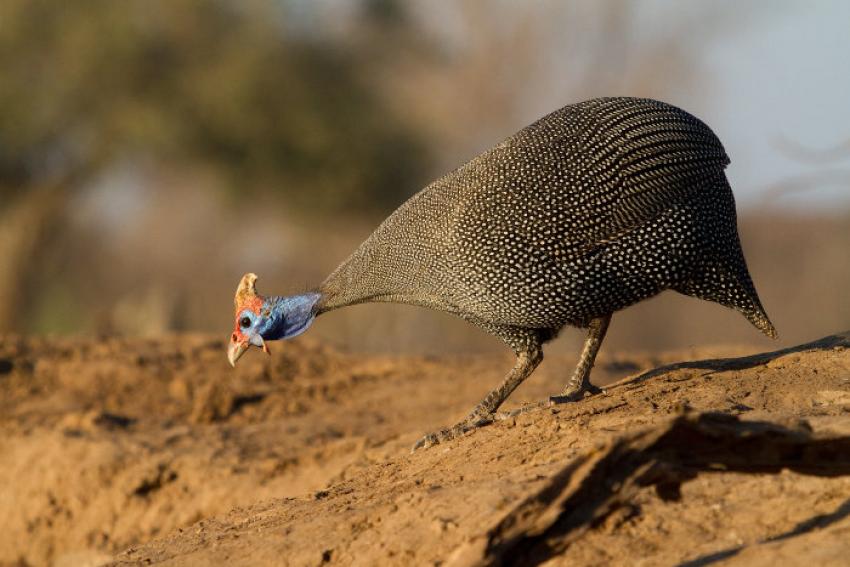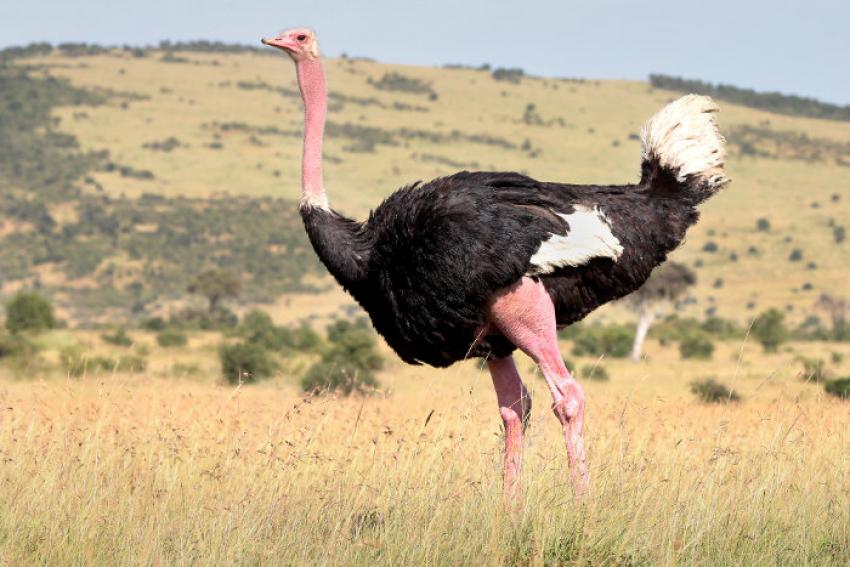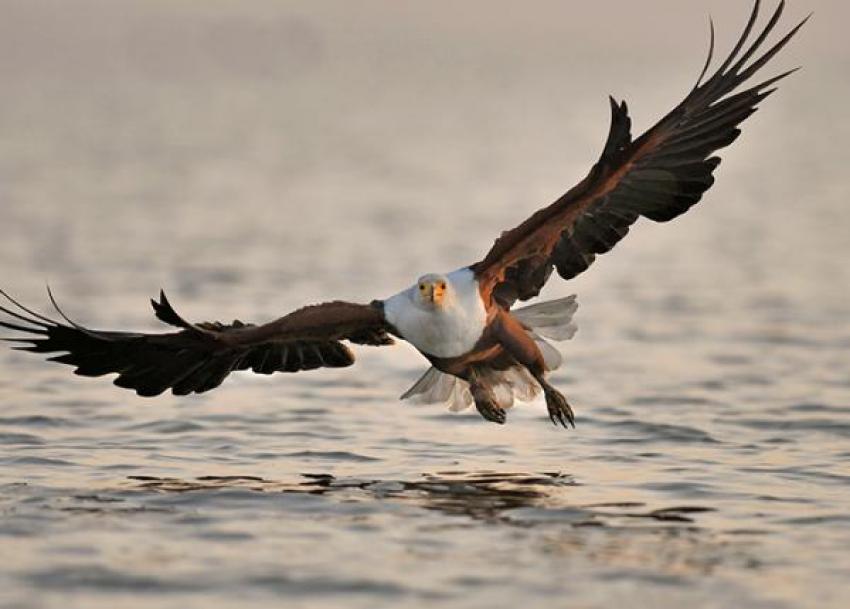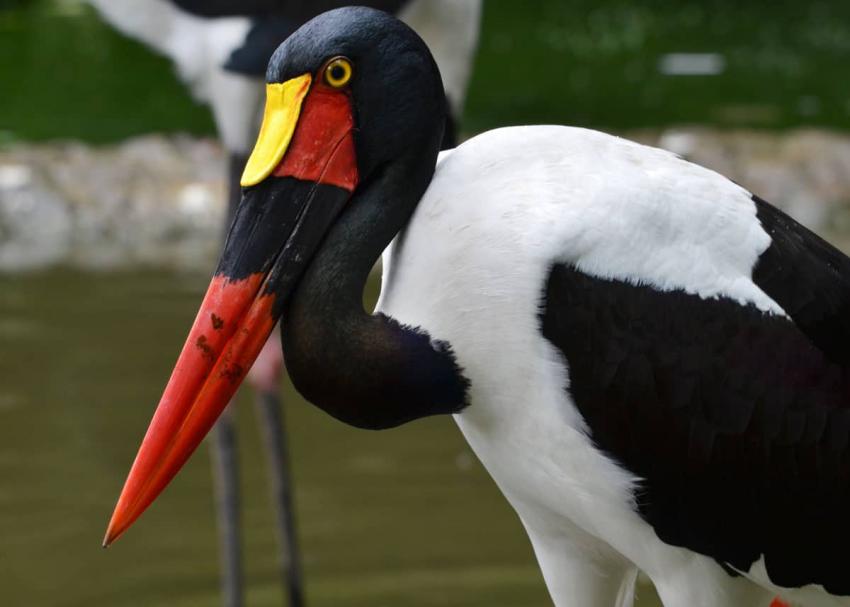While East Africa is renowned as a destination for spotting big-game wildlife, its national parks and reserves also provide habitat for a diversity of bird species. Around 2,500 different species of birds have been recorded on the continent, some of which call Africa “home” permanently and others that are just passing through on global migratory routes.
In this article, we’ll introduce 10 species not to miss on a birdwatching safari in East Africa, from huge flightless birds to nocturnal dwellers.
Common ostrich (Struthio camelus)

Ostriches hold the title of the largest living bird on Earth, with their heavy weight making it impossible for them to fly. That being said, they are extremely fast on land and can reach speeds of up to 70 kilometres an hour. Their powerful legs are also used to kick predators and they lay the largest eggs of any bird that exists today. Ostriches are found throughout East Africa and are regularly spotted on the grasslands and savannah of the Serengeti and Maasai Mara where they live in nomadic groups of between 5 and 50 birds.
Grey crowned crane (Balearica regulorum)

Also known as the African crowned crane, these striking birds are the national bird of Uganda but can be found throughout Eastern and Southern Africa. Their crown of stiff golden feathers and bright red throat pouch makes them easily identifiable, together with long legs that are designed for wading through tall grasses. They are most commonly spotted in dry savannah, marshes and grassy flatlands near rivers and lakes. If you’re lucky, you may get to see their elaborate mating dance, which involves lots of jumping, bowing and spreading their wings to their full two-metre span.
Flamingo

Africa is home to two different species of flamingos - greater (Phoenicopterus roseus) and lesser (Phoeniconaias minor) flamingos. Both feed in shallow lakes where they scoop up mud using their bills to find small crustaceans and plankton. They get their pink-hued colour from the shellfish that comprises their diet and makes them one of the most photogenic birds in East Africa, particularly when seen en masse. Depending on lake conditions, Flamingos can usually be seen in their hundreds (if not thousands) at Lake Natron in Tanzania, as well as at Kenya’s Lake Nakuru, Lake Bogoria and Lake Elmenteita.
African fish eagle (Haliaeetus vocifer)

Found throughout sub-Saharan Africa, the African fish eagle is a powerful bird of prey and the national bird of both Namibia and Zambia. It features a distinctive hook-shaped beak that’s designed to easily snare prey, as well as barbs on its feet to prevent slippery fish from falling. The African fish eagle is one of the largest eagles on the continent, with a wingspan that can reach up to 2.4 metres and eyesight that is 10 times stronger than a human. One of the best places to spot these iconic birds is around Lake Victoria, which straddles Uganda, Kenya and Tanzania.
Kori bustard (Ardeotis kori)

Despite being one of the largest flying birds in Africa, the kori bustard spends much of its time on the ground and nests in shallow hollows. Unlike most birds, it doesn’t have a preening gland to help keep its feathers keen and instead takes regular dust baths to remove parasites. Males can weigh up to 18 kilograms and have a wingspan of up to 2.75 metres. Kori bustards are commonly spotted at Tanzania’s Ngorongoro Crater and Serengeti National Park, as well as in Botswana and Namibia. They’re known to follow herds of zebras through open savannahs in search of prey that has been disturbed by hooves.
Helmeted guinea fowl (Numida meleagris)

These attractive ground-dwelling birds are native to Africa but have been introduced as domesticated species to places as far away as Australia and the West Indies. Helmeted guinea fowl feature a rotund body that’s covered with spotted black and white feathers and have long been prized for their meat and eggs. They can be spotted throughout sub-Saharan Africa in open grasslands and savannah, with large flocks often following herds of zebras and antelopes.
Pied kingfisher (Ceryle rudis)

Widely distributed throughout East Africa, the pied kingfisher is a striking white and black bird that lives near lakes and rivers where it hunts for small fish and aquatic insects. They were originally described by the Swedish taxonomist Carl Linnaeus in 1758 and are quite noisy, which makes them easy to spot. Pied kingfishers are skilled at swallowing their food in mid-flight, which allows them to venture further acrosss water than other species of kingfishers. Your best chance of spotting them is on a boat safari, from where you can get a good view of the mud nests they build in the riverbanks.
Lilac-breasted roller (Coracias caudatus)

With its bright colouration, the lilac-breasted roller is one of the prettiest birds in East Africa and has been designated as the national bird of Kenya. They’re known for their aerial acrobatics (hence the name “roller”), with the males often seen diving and swooping to attract females during the mating season. Lilac-breasted rollers are found throughout East Africa and are best spotted in open woodland or bushy savannah where they congregate in pairs on tree branches to hunt for insects and beetles.
African wood owl (Strix woodfordii)

African wood owls are strictly nocturnal birds that inhabit forest and woodland habitats throughout Tanzania, Kenya, Zambia and Uganda. They feast on moths, grasshoppers and beetles, as well as occasionally catching small reptiles and mammals. While they are attractive birds with a haunting song, their conservation is sometimes challenged as they are considered bringers of bad luck in some African cultures.
Saddle-billed stork (Ephippiorhynchus senegalensis)

These large wading birds are resident across sub-Saharan Africa, including in Tanzania, Kenya and Uganda, as well as in some parts of South Africa where they are considered endangered. They can grow up to 1.5 metres in height, making them the tallest stork in the world. Saddle-billed storks are named after their red and black beaks and feature a yellow and red patch on their chest that’s used to transfer heat to eggs during the breeding season. They are usually spotted near water bodies where they feed on fish, frogs and crabs.
Want to plan a birdwatching safari in East Africa? Check out our diverse range of tours at Vencha Travel.

 1-321-766-6821
1-321-766-6821 















